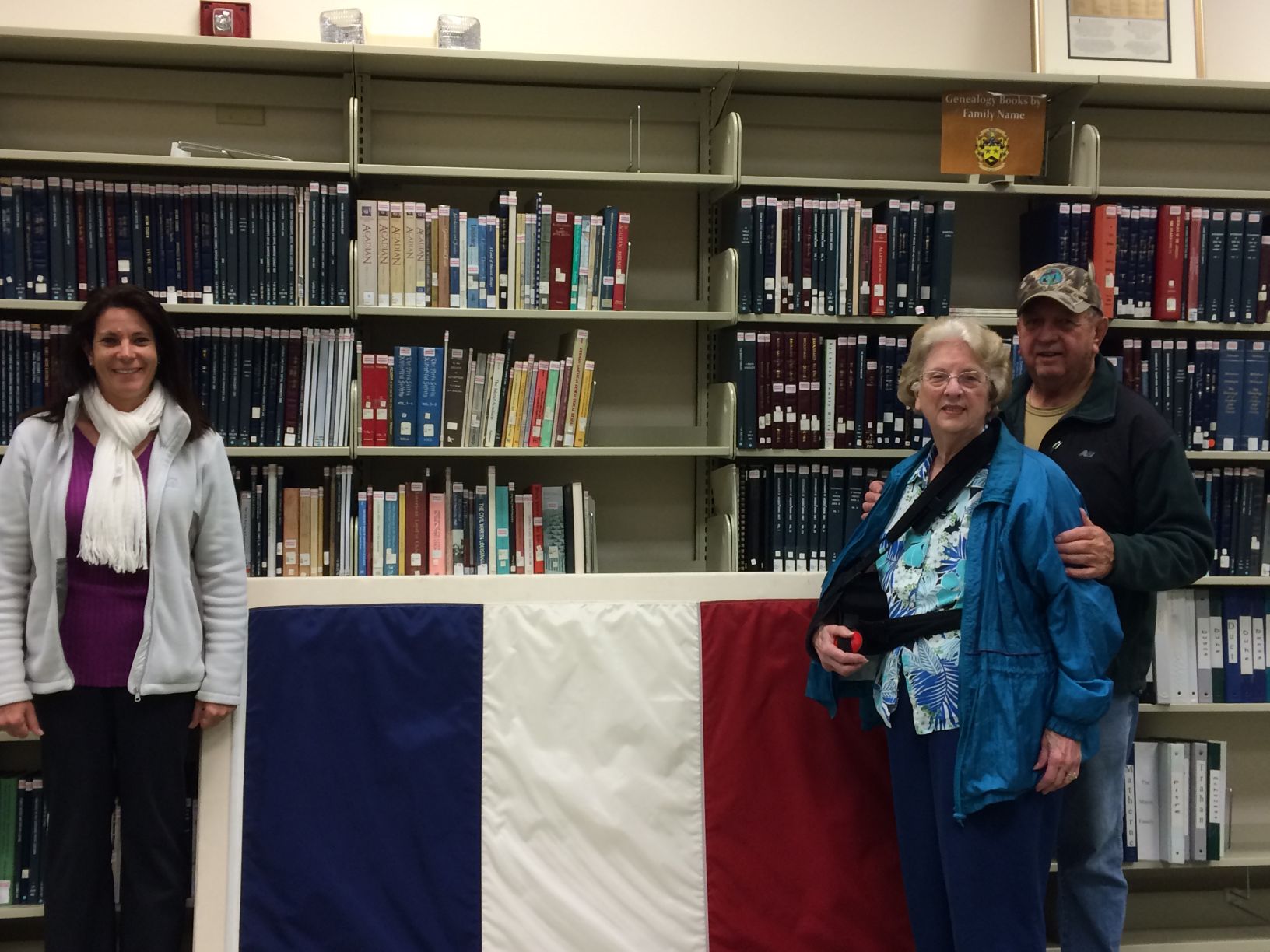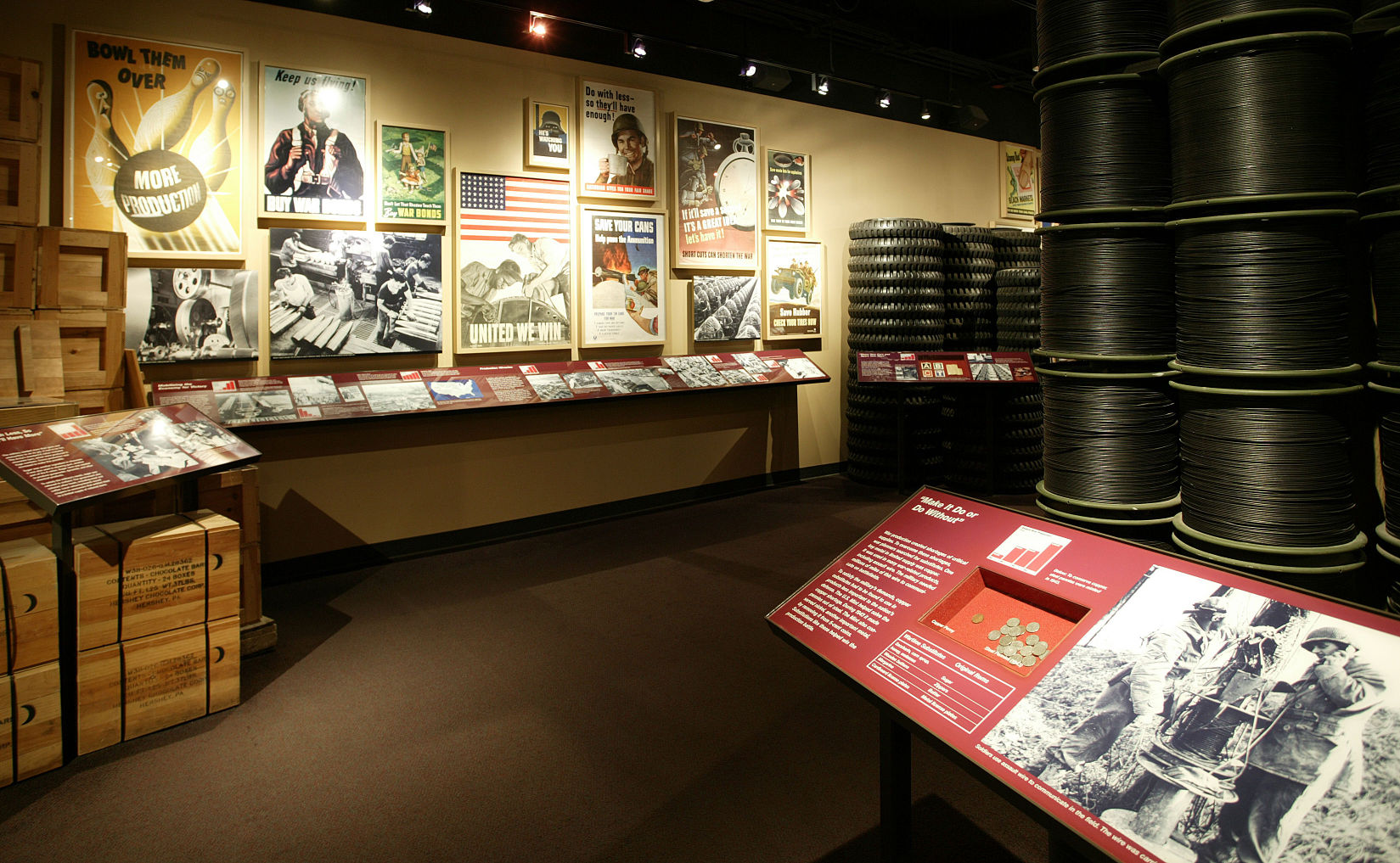Teach, then comes responsibility
November 11, 2014
Group keeping the French culture alive in Lafourche Parish
November 11, 2014Sometimes in life, people get lucky.
That is how former Nicholls graduate and current chief operating officer of the World War II Museum Stephen Watson feels.
“I am a lucky guy. Sometimes you just get lucky and end up in the right place,” Watson said. “I certainly feel like that has happened to me.”
Watson, a native of Scotland, has always had an interest in history, which he related back to his late grandfather, Peter Watson, who was a pilot for the British Royal Air Force during WWII.
“He always talked about his time in the military, and just like everyone else’s grandfather, he went from a farmhand and next thing you know, they are flying airplanes in Africa,” Watson said. “Although I did not understand it at the time probably, it was a transformational event in his life.”
Because of his grandfather and interest in history, especially WWI and WWII, the then-14-year-old ventured off to Normandy for a high school field trip, which Watson still remembers vividly.
“I remember how impactful being at Normandy and to be at the cemeteries where these battles happened. That was at 14,” Watson said. “It had a huge impact on me as a teenager going to these places and seeing these sites.”
Watson continued down his path as a student and track star. Watson won the Scottish National 5,000-meter championship in high school and then studied at the University of Scotland when he got a call that changed his life.
“Out of the blue, I got a call to come down to the front desk of the University of Scotland dorm room. I am thinking, ‘Oh God, what have I done?’ Watson said. “There is a coach from Nicholls on the other end of the phone and asks if I want to come to Nicholls on a scholarship. He tells me there is a FedEx package coming for you tomorrow. I got the FedEx package the next day and had no intention of going to the states, but I knew if I did not go, I would look back and say, ‘What if.’
On August 14, 1994 Watson made his way to Thibodaux to study Marketing, which he finished in 1997 and then received his MBA in 1998.
Watson had no intentions of staying in the states and that his decision to go to Nicholls was more based out of curiosity.
“The crazy thing was we really had no idea what the hell I was doing. I figured I would give it a shot and see how it worked out,” he said. “The truth is, I get to South Louisiana, and it is 40 degrees hotter than I had ever experienced in my life. It is not a good spot for distance running so it was not the best thing for my running career, but it certainly has been an amazing of coincidences that put me in Thibodaux because I will be forever grateful for it. I love Nicholls and had a great experience there. It was awesome. I love South Louisiana so I will be forever grateful that I got here.”
After graduating, Watson moved to New Orleans about a year before the then called D-Day museum opened its doors in 2000.
“It was quite a buzz that this great new museum in the country that came around the same time as ‘Saving Private Ryan,’” Watson said. “It was a significant thing that happened in the city right around the same time I came here from Thibodaux.”
About a year after it opened, Watson saw a job advertisement in the paper to run the museum’s membership and fundraising program. He applied and was offered the job but had to decline because his employer at the time offered him a promotion.
“I told the D-Day Museum, ‘As much as I love the opportunity, my employer just offered me a huge promotion, and I feel loyal to them,’” Watson said.
The museum obliged to Watson’s decision, at least for a little while.
In 2002, the museum had plans for expansion to launch their membership program where Watson’s role would be getting a heavy base of national support because it was transitioning from the D-Day Museum to the National WWII Museum.
“They came back to me and said we really want you to work for us,” Watson said.
This time, it was Watson who obliged.
He and the museum staff worked with people in Washington, D.C., who helped establish the WWII Memorial. Because of founder, Dr. Stephen Ambrose’s connections, Tom Hanks and Tom Brokaw jumped on board to endorse the museum.
Hanks serves as the honorary chair of the museum’s capital campaign, which is designed to raise money.
“It was a combination of my own experience, getting folks who had done similar work and getting some big names,” Watson said. “Put all of that together, and we launched in the fall in 2002.”
Soon after the launch, Ambrose passed away around the same time that the museum began mailing out membership letters.
But because of everything Ambrose had done in his time, Watson and the staff were able to establish a masterpiece. The museum went from 30,000 members to 60,000 in two years. Now the museum is up to 130,000 members.
“That is the largest of any museum of any kind in the country,” Watson said. “It has been such a critical part of our growth and success over the last 15 years.”
Watson was promoted to COO in 2007, which requires him to have his hand in the education programs, technology, marketing and every other aspect of the business.
In his time as COO, Watson mentioned several programs he is proud the museum was able to establish.
In 2009, the Solomon Victory Theater Complex was opened, which features the 35-minute 4-D film Beyond All Boundaries produced with Tom Hanks.
“That has been a game-changer for us and set a new standard for 4-D presentations in museums all over the world,” Watson said. “It won the American Museum Association’s highest award for a multimedia exhibit in 2010.”
In 2011, the restoration pavilion was opened where people can see a Hagen PT305 patrol boat.
In 2013, the freedom pavilion was opened. Folks can see a Medal of Honor exhibit as well as experience an interactive submarine mission.
“It is based on the final mission of the USS Tang, which is the most decorated sub in WWII,” Watson said.
Watson spoke Monday at the Bayou Country Club in Thibodaux and discussed some of the new attractions coming to the WWII Museum.
The Road to Berlin will open in December. It will chronicle the experience of the European Theater during WWII all the way from the United States’ first engagements against the Nazis to the Germans’ surrender after Hitler committed suicide.
“This is basically an environmental documentary that will make you feel like you are there,” Watson said. “It will have great artifacts, iconic documents and a lot of interactive media. It is a very rich environment. I think it is our proudest achievement yet.”
The museum will release a similar exhibit in December 2015 called Road to Tokyo, which will chronicle the experience of the Pacific Theater.
The WWII Museum has been a huge staple for New Orleans. Last month, Trip Advisor released their travelers’ choice award, which ranked the WWII Museum at four behind the Chicago Art Institute, the Getty Museum in Los Angeles and the Metropolitan Museum of Art.
“To be behind those museums as a young 15-year-old museum in New Orleans is staggering,” Watson said. “What I am most pleased about is that this war story is being told in a world-class way. We have some of the most talented historians working with us telling these stories. To this day, we still have five historians traveling the world to talk to WWII veterans. We have the largest curated collection of WWII veteran oral histories in the country, about 7,500 of them.”
Watson remembers his time seeing the beaches of Normandy and the impact it had so his hope is to give people that same feeling and experience.
“That is a core component of what we do at the museum, which is, take people across the world to these battle sites,” he said. “It is privilege to work at this museum. I love coming to work everyday and I care passionately about what we are doing. WWII was the biggest global event of the 20th century. It had a transformational impact on this country. More than 400,000 Americans lost their lives and 65 million people worldwide. The significant importance of what we are doing is overwhelming and a big responsibility. It is a privilege to be part of that.”
The National WWII Museum began with D-Day and then turned into an internationally recognized establishment culminating many of the events from World War II. The museum’s chief operating officer, Stephen Watson, is a native of Scotland educated at Nicholls State University.














